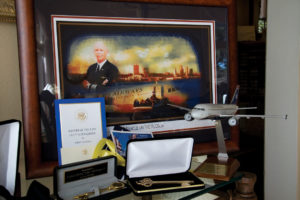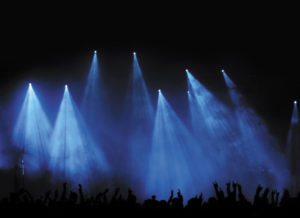I‘ve spent a great deal of my adult life trying to understand what a hero is and what makes them tick. As a Trustee of the USS Hornet Museum and the Associated Airtanker Pilots (i.e., aerial firefighters), I’m in daily contact with people who can legitimately be classified as heroes. I don’t know the formal psychological definition of the term—my perspective is more “when you see it, you know it.”
Thanks to Hollywood, most younger Americans confuse “celebrities” with “heroes.” I spend quite a bit of time on the Hornet discussing this with kids. An actor in a space movie never leaves the safety of a sound studio and is well paid for entertaining a few theater goers. The Apollo astronaut being portrayed, however, trained for years before strapping himself into a Volkswagen size craft on top of a giant rocket with 7.5 million pounds of explosive thrust. He spent many days in a highly hazardous environment, earned a modest salary, yet accomplished goals set forth by his nation, to the betterment of all mankind. It’s a pet peeve of mine when someone mixes them up.
But that doesn’t mean actors can’t be heroes. In the summer of 2001, I was in Jackson Hole, WY when the Green Knoll wildfire broke out. I watched from an adjacent mountain as the fire spread rapidly. Amidst all the smoke, flying debris and tricky winds, with airtankers and TV helicopters buzzing around, there was one civilian helicopter that repeatedly landed near homes in the area of the flames, unloaded supplies and evacuated trapped citizens and pets. It flew between the fire scene and the airport several times. The next day I learned the helicopter was flown by Harrison Ford. He was in the right place at the right time, with both the means and the desire to effect a meaningful change of destiny for citizens in his community. He’s a hero to me.
Let me share what little I’ve learned about what makes them tick. Every Medal of Honor winner has told me “I was just doing my job” or “I just wanted to save my buddy’s life.” The fact that someone else saw it, wrote up a decoration and a medal was awarded is all secondary in the grand scheme of things.
I know for a personal fact that Neil Armstrong does not claim his walk on the moon to be heroic. He views himself as an explorer, pushing the edge of the known world to new heights, much as Charles Lindbergh did when he flew his daring solo mission across the Atlantic in 1927. Over 400,000 civilian, military and government personnel assisted this noble scientific cause and he is the first to note they made his historic walk possible. Few people know about his more heroic exploits. During a combat mission in the Korean War, his Navy jet was seriously damaged attacking a bridge deep in enemy territory, but he skillfully nursed it back into friendlier skies so he could bail out and rejoin friends in his squadron a day later.
There are certain traits that seem to be consistent with those heroes I’ve had contact with. I am always struck by their quiet confidence and humility. For those from the military, this stems from their knowledge that most of the heroes did not return from places like Normandy and Iwo Jima, nor did they get medals. Duty, honor, and sacrifice are more than just words to those who have served in combat. For those in the first responder community, almost any situation can take a sudden turn towards disaster. While good training and lots of practice keeps them reasonably safe, all too often a dispatch ends with the playing of bagpipes, so there is a strong bond among themselves to leave no one behind.
People who perform heroic acts have the ability to quite the mind and focus their thoughts on just those few essential details that determine whether the outcome is life or death. They are able to overcome their fears and make rationale decisions even in the midst of a sensory maelstrom. Rationale does not necessary mean “logical”… though sometimes it means falling on a hand grenade to save your buddies in the foxhole beside you.
All professional pilots are trained in rapid decision making skills. The USAF teaches its aviators a specific process called the OODA loop – observe, orient, decide and act. But life-threatening emergencies happen very rarely and simulated emergencies have a “shelf life” in the mind and reflexes of a pilot. The pilot-in-command must have a psyche that overrides the natural human tendency to panic when under great stress.
Captain Sullenberger’s experiences in the USAF, plus the many flight hours logged in airliners and training simulators were all invaluable in allowing him to quickly orient himself to a very fluid situation once both engines went out of commission simultaneously. But his innate mental abilities allowed him to process information quickly, determine several potential options, and reject the sub-optimal ones in favor of the most rationale solution. You can hear it in his voice on the FAA control tower tapes. His focus was finding a way to land the airliner (a huge glider, in reality), not chatting with the tower operators, or screaming at the crew or saying Hail Mary’s.
He quickly and rationally determined how to maneuver his aircraft into a survivable “landing envelope.” Even more impressive was how he quickly expanded that into a “passenger survivability envelope” by putting the aircraft down near the ferries, trusting that the first responders in the water would do their jobs just as well. This Danville pilot has “the right stuff” – sounds pretty close to “hero” to me!
Way to go Sully !









